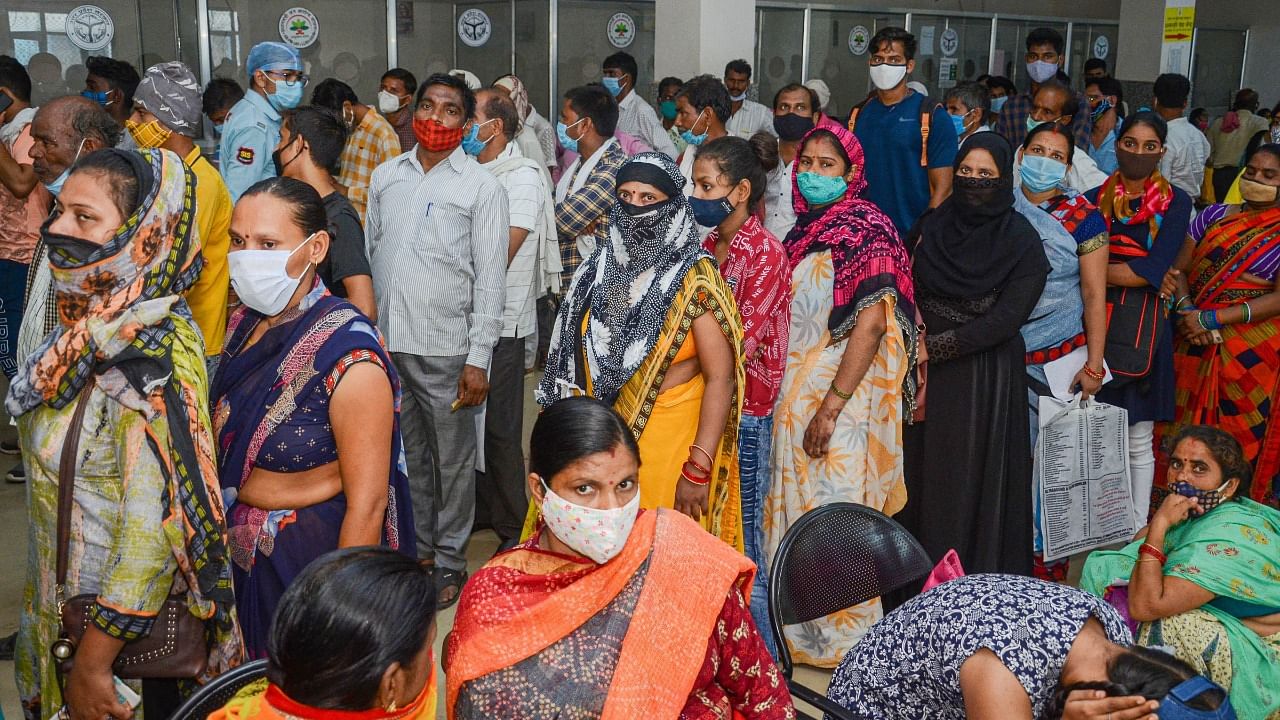
The Uttar Pradesh government’s draft legislation — The Population (Control, Stabilisation and Welfare) Bill, 2021— introducing a mandatory two-child norm, has kicked up a huge debate.
In a memorandum to the President, a group of women’s organisations termed it ‘unconstitutional’, for violating the ‘right to equality’. They said that it enforces compulsion, attempts to control women’s bodily rights and fertility, will expose them to domestic violence and abusive relationships and encourage people to evade registration of marriages, which, in turn, will deprive many women of rights of maintenance, support, and property.
Poonam Muttreja, Executive Director, Population Foundation of India (PFI), is of the view that the Bill, with its restrictive norms, will further ‘dispossess the most disadvantaged, who are the ones most dependent on government rations, subsidies and schemes. In the present pandemic situation, which has already exacerbated inequities, it will put women and children at further risk’. The Bill also drew flak for looking at the issue purely from the ‘demographic angle’, and ignored the findings of the empirical studies that reiterated that ‘socio-economic empowerment of families is a far more effective way in limiting the family size, enabling women to opt for reduced fertility rates as rational choices’.
While some political parties dubbed the UP Bill an ‘election propaganda’, population experts, on the other hand, questioned the very rationale behind its mooting, when, according to government data, the state is undergoing a declining fertility rate (TFR), which has nearly halved from 4.82 in 1993 to 2.7 in 2016. A technical group under the National Commission on Population (NCP) estimated that the state will achieve the replacement level of TFR (2.1) by 2025. However, it is not UP alone. Assam as well and a few more states are now also mulling over introducing two-child policies in their respective states. In fact, if we look back, since the early 1990s, as many as 12 states introduced some versions of such policies for limited purposes, while four among them subsequently revoked them.
In this context, the Ministry of Health & Family Welfare’s biennial evaluation report (2019-20), based on National Family Health Survey-5 (NFHS) data, has confirmed that a ‘transition in fertility’ is already under way in 19 out of 22 states surveyed, attaining the TFR below the replacement level. Bihar, which has a two-child policy from 2007, was found to be one of the three defaulting states, with a TFR of 3.5, much above the replacement level. Against this, southern states like Kerala (1.8), Karnataka (1.7), Andhra Pradesh (1.7) and Goa (1.3), all have performed much better than the national average of TFR (2.2).
These states, instead of prohibitive norms, concentrated on improving women’s education, which created enlightened decisions. N Saggurti, India Country Director, Population Council, commented that ‘punitive provisions do not make much impact either on fertility change or reproductive health goals per se, while improved status of women, definitely, yields better results. Nevertheless, there are some defenders of the UP Bill too, saying it ‘is a timely step in the right direction’, as the state confronts ‘an extremely adverse man-land ratio, accommodating around 17% of India’s population within 7% of the land area, and faces huge developmental challenges’. A PFI statement read that ‘UP’s Population Policy (2021-2030), based on a non-coercive, rights-based and life-cycle approach, would become irrelevant and ineffective, if the proposed bill comes into effect’.
Emergency excesses
Nonetheless, in the 1960s and 1970s, India, was in the league of those countries which were influenced by the Neo‐Malthusian overpopulation alarmism, and its ugliest manifestation was seen in forced sterilisations during the period of Emergency (1975–77). Now, when many countries of the world like China are moving away from ‘control and command’ approaches, surprisingly, such ideas are now seeing resurgence in India.
Two private member’s bills, one, titled ‘Population Regulation Bill, 2019’, and the other a ‘Constitutional Amendment Bill, 2020’, are pending in the Rajya Sabha. They have raised the hackles of many, especially, when India is witnessing a significant drop in decadal population growth. According to data from National Population Commission (NPC), India’s decadal population growth rate has gone down from 21.5% to 17.7 % between 1991-2001 and 2001-2011 and is set to touch the lowest since the independence to 12.5% in the 2011-2021 decade, and to further plummet to 8.4% in the coming decade (2021-2031).
As a demographic shift is already in progress, raising the bogey of population explosion has been considered by many as `politically motivated’, targeted towards a particular community, and will ‘lead to a systemic direct exclusion of the marginalised’. Gender experts fear that ‘when many women in India still can’t choose to refuse marriage or to reproduce, they will be further victimised with forced birth control measures’. Though the government has ruled out the possibility of taking them up in the monsoon session of Parliament, there is a lurking fear among many that they may be raked up before the 2024 Lok Sabha polls for polarisation of votes.
Now, as women in India, under the dark shadows of the pandemic, suffered many setbacks with regard to health, food security, education, job opportunities and increased violence, there is a need for a new set of women-centric policy tools, facilitating their re-entry into the mainstream of development.
India should also recall the principles adopted at the Cairo International Conference on Population and Development (ICPD), 1994, duly incorporated in the National Population Policy, 2000, and embark on a journey for a ‘balanced population growth’, focusing on ‘informed free choices’, and ‘development as the best contraceptive services’.
(The writer is former Director-General, Doordarshan, and All India Radio and also former Press Secretary to the President of India)